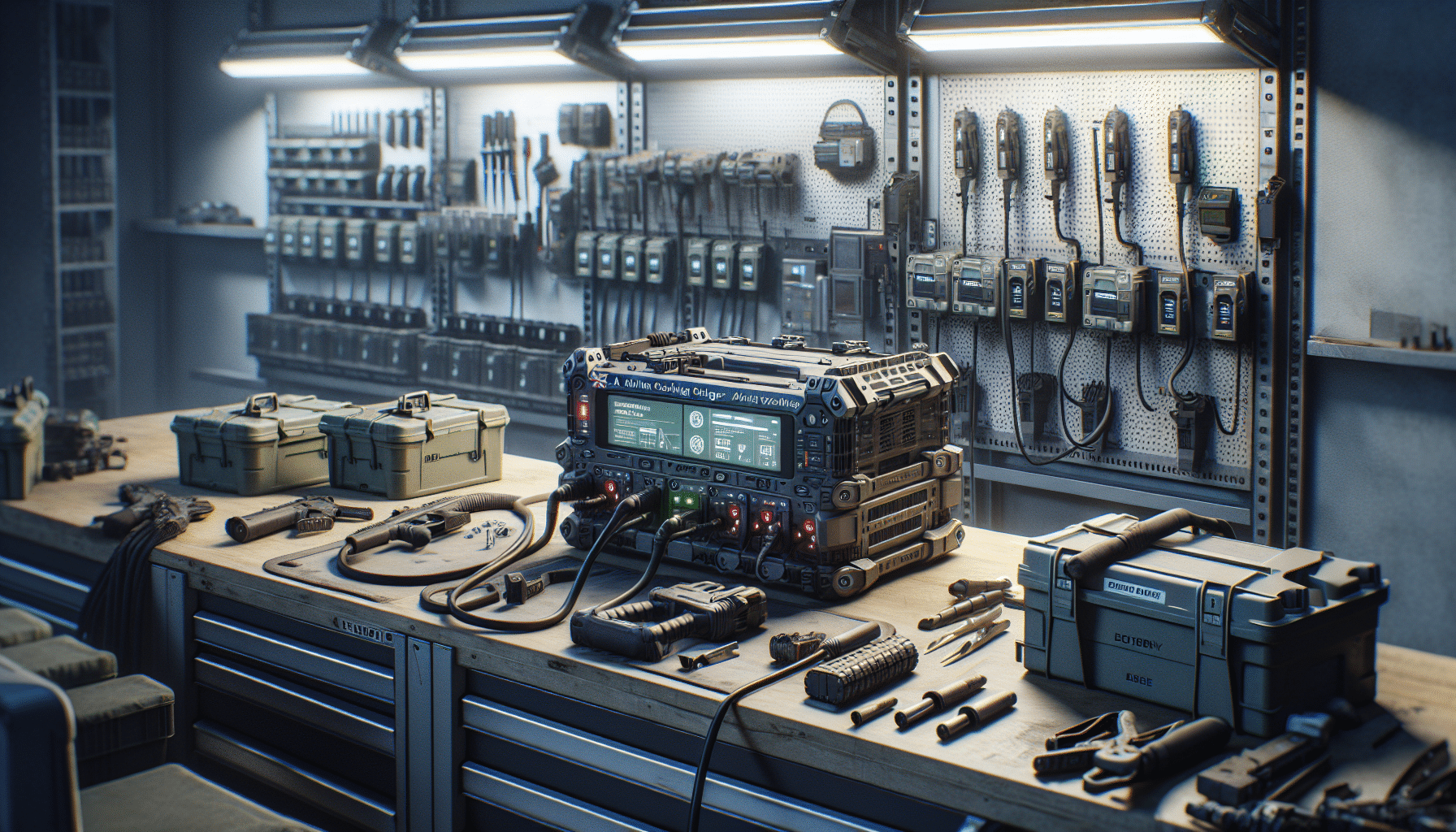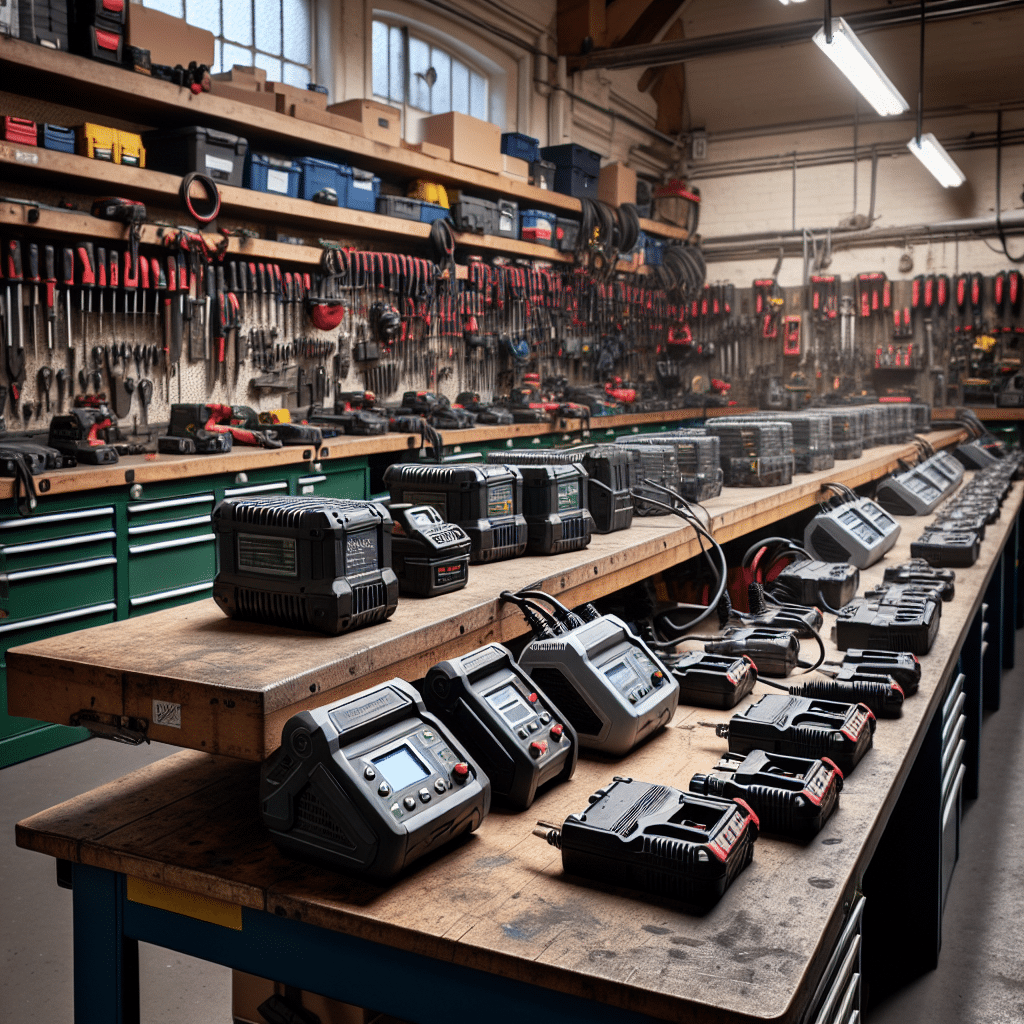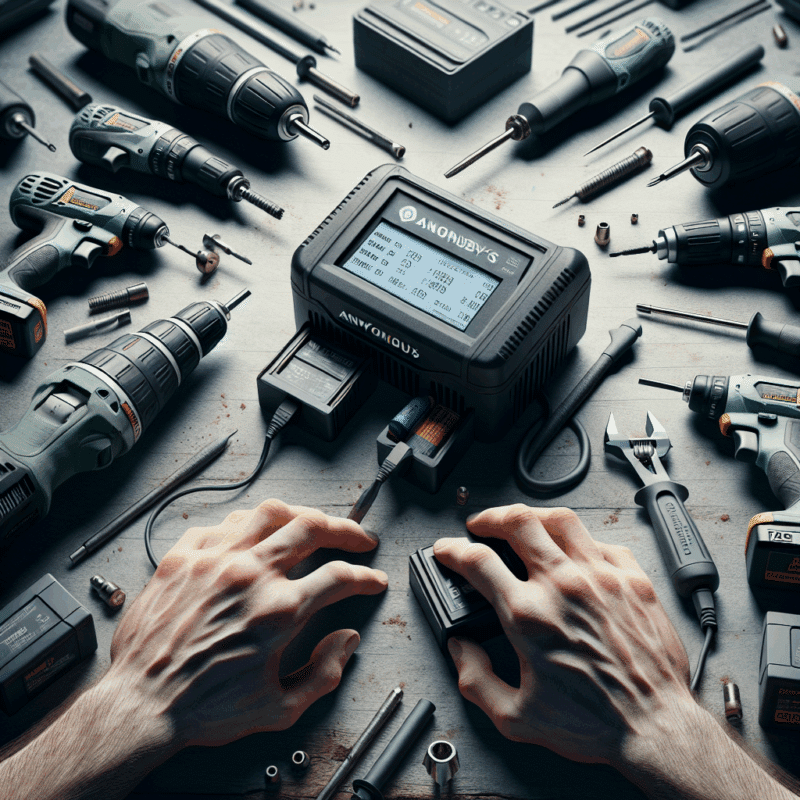Is Your Workshop Losing Money Without Active Cooling Chargers?
In This Article
- Active cooling systems drastically reduce charging time and improve tool availability.
- Battery longevity improves due to reduced thermal stress.
- Costs from replacements and downtime decrease over time, boosting ROI.
- Proper implementation avoids common layout and compatibility issues.
- Data-driven monitoring enables ongoing optimisation and future scalability.
Why Efficient Charging Matters in Workshops
The True Cost of Slow Charging
Every minute a battery takes to charge in a busy workshop has a cost. In an active cooling charger workshop, slow or inefficient charging methodologies can lead to machine bottlenecks, reduced productivity, and even diminished customer trust. While traditional passive chargers may seem cost-effective upfront, they can drag down your repair cycles and impair operational tempo. The more downtime incurred during charging cycles, the more labour hours are lost in limbo — a fact often ignored in the daily hustle.
Let’s quantify it. A standard 5Ah battery on a passive charger may take over 90 minutes to charge fully, especially in warmer operating environments. In contrast, an active cooling charger can reduce those times dramatically by managing internal temperatures, ensuring optimal power flow during the busiest hours of operation. Multiply that time saved across dozens or even hundreds of charging cycles per week, and the economic implications become impossible to deny.
As more workshops strive to modernise their infrastructure, efficient charging has graduated from a “nice to have” to a core requirement. It’s not just about saving time. It’s about elevating the entire workflow and redefining throughput across all equipment. That’s where the value of an active cooling charger workshop truly begins to show.

What Is an Active Cooling Charger?
Understanding the Technology
An active cooling charger refers to a charging system that integrates built-in fans or heat dissipation systems to maintain ideal thermal conditions during the charging cycle. Unlike conventional chargers that rely only on ambient temperatures and passive heat dissipation, active coolers monitor internal battery heat points and respond accordingly — often in real time.
This meticulous temperature regulation solves a common yet largely unspoken issue in battery charging: thermal throttling. As batteries heat up, most chargers automatically reduce charging speed to protect the battery’s integrity. However, this protective slowdown impacts productivity. With active cooling, thermal buildup is mitigated proactively, allowing cells to charge at maximum safe speed and consistency throughout the cycle.
Investing in an active cooling charger workshop setup means your batteries are kept within optimal operating temperatures through intelligent airflow. This results in faster charging sessions, safer battery performance, and consistent uptime. Whether you use cordless drills, impact wrenches, or heavy-duty battery-operated lifts, ensuring peak battery output is an investment in reliability and efficiency.
The Role of Active Cooling in Charge Cycle Speed
Temperature Regulation Explained
Temperature plays a pivotal role in determining how efficiently a lithium-ion battery charges. As a battery heats up during rapid charging, its chemistry begins to degrade if left unchecked. Consequently, many traditional chargers are programmed to adopt conservative charge profiles once they detect heat elevations, causing throttling and voltage tapering. This keeps your batteries safe, but operationally, it becomes a bottleneck.
With an active cooling charger workshop, an integrated fan assembly dynamically cools the battery cells during energy transfer. This allows for a flatter, faster charge curve. Modern active cooling units are designed with precision sensors and twin-fan architecture, ensuring that even under high ambient temperatures, charge speed remains optimised and peak temperatures are never breached.
The result? Shorter charge times, reduced lag between battery swaps, and a significant enhancement in your team’s ability to maintain momentum. Over time, this translates to greater tool availability, faster task turnover, and far fewer interruptions.
Battery Longevity and Charging Efficiency
Preserving Performance Over Time
Battery health isn’t only about capacity — it’s about how long that capacity lasts over months and years. Repeated thermal stress shortens battery lifespan considerably. Passive chargers cannot prevent excessive thermal load, especially in rapid-charging environments.
In contrast, an active cooling charger workshop gives your batteries the consistency they need to maintain optimal chemistry. Consistently cool battery packs experience lower degradation rates, often extending battery life by up to 25% compared to standard setups. These gains are not just theoretical — many workshops report measurable extensions in battery replacement cycles, saving thousands annually.
Additionally, batteries that are actively cooled tend to perform more consistently under load. That’s invaluable for service efficiency where underpowered tools can affect job precision, timing and safety. Proper charging leads to predictable discharge profiles — a cornerstone of workshop reliability.
Signs Your Current Setup Is Costing You
How to Diagnose Inefficiency
Without diagnostic attention, your charging setup may be bleeding productivity. Warning signs include recurring tool downtime, inconsistent charge completion times, and batteries that feel hot to the touch post-charging. If your workflow frequently pauses for batteries to cool before reuse, you’re already experiencing a time loss that can be resolved with an active cooling charger workshop.
Furthermore, repeated cell replacement or tool shutdowns under strain can indicate internal damage from poor charging practices. Similarly, reliance on “spare” batteries to cycle through charging lags is not a solution — it’s a costly workaround that inflates operational inventory.
Regular audits of your charging station, battery health diagnostics, and workflow mapping can expose the exact pain points. Once identified, correcting them through enhanced technology becomes not only smart — it becomes essential. Learn more about Workshop Power Management & Charging Optimisation
Return on Investment: Are They Worth It?
Pricing vs Long-Term Value
Let’s address the elephant in the room — upfront cost. Investing in an active cooling charger workshop infrastructure may require elevated outlays, especially for medium to large operations. However, a comprehensive ROI analysis shows these systems pay for themselves relatively quickly.
Consider the avoided costs: longer battery lifespan, decreased tool downtime, improved technician throughput, and reduced need for spare inventories. When you factor in potential savings on emergency tool replacements and delayed project penalties, the numbers start leaning heavily in favour of active cooling systems. Common reasons workshops lose profit
Moreover, some manufacturers now offer warranties contingent on the use of active cooling. By aligning your practices with such standards, you improve compliance, reduce repair errors, and protect long-term equipment investments. No serious operation can afford the convenience of delay when the alternative is scalability with reliability.
Real-World Case Studies from Similar Workshops
Testimonials & Performance Metrics
One mechanical workshop in Bristol reported a 38% drop in tool downtime within three months of implementing an active cooling charger workshop system. Battery turnover improved, and client service times were reduced by nearly 20%, according to internal audits. Another firmware calibration centre in Edinburgh saw battery pack longevity improve by 30% — leading to fewer replacements and longer charge-holding capacity even under intensive tool use.
These aren’t isolated outcomes. When active cooling chargers are deployed strategically — across production benches, maintenance zones, and assembly cells — the benefits scale easily. New productivity baselines are set, allowing legacy workflows to evolve into modern, data-driven charging ecosystems.
One logistics support operation, for example, standardised its charging zone layout with integrated fans and active switching hubs. The result? Greater predictability, lower energy waste, and significantly lower utility bills. Read a related article
How to Upgrade: Tools, Layout & Integration Tips
Planning a Smart Charging Workflow
Transitioning to an active cooling charger workshop infrastructure starts with assessment. Identify the heaviest usage areas and prioritise them for upgrade. Tools with rapid cycle needs — such as impact drivers or battery shears — benefit most from thermal stability.
Next, plan physical layout intelligently. Keep charging stations near workbenches but clear of high-stress zones (e.g., welding stations) to maintain air circulation efficiency. Use modular racking systems to accommodate various battery sizes and integrate surge-protection units for consistent voltage supply.
For integration, choose manufacturers that offer smart platform compatibility. These allow remote monitoring, diagnostics, and even maintenance reminders. Ensure staff are trained in interpreting LED diagnostics and use scheduled rotations to evenly manage charging loads. Scale digital operations efficiently with automation
Common Pitfalls to Avoid When Upgrading Chargers
Mistakes That Reduce Efficiency
Upgrading your system without a workflow audit is a common mistake. Simply swapping out old chargers for active units without optimising placement, compatibility, or staff training often leads to subpar results.
Another issue lies in mixing battery chemistries across different tool brands. Not all chargers handle variant cell architectures equally, and even active cooling models can underperform when mismatched. Avoid clustering too many chargers in one poorly ventilated space. That negates cooling gains and can overwhelm airflow systems, ironically reintroducing heat issues.
Finally, failing to monitor the effective use of these upgraded chargers results in wasted investment. Implement logbooks or cloud systems to track usage patterns and fine-tune further enhancements based on hard data.
The Bottom Line for Workshop Owners
From Waste to Optimised Workflow
In a demanding high-output environment, every inefficiency compounds. An active cooling charger workshop does more than just speed up battery replenishment — it revolutionises workflow rhythm, tool availability, and battery health. The prevention of premature failures, combined with better real-time performance, translates directly into profit resilience and client satisfaction.
More importantly, future scalability becomes possible. With charger systems that adapt to expansion and can be monitored remotely, small optimisations today turn into large capabilities tomorrow. Don’t just fix problems when they occur — prevent them with efficient, proactive systems that build true operational resilience.
“Before upgrading to active cooling chargers, we were constantly swapping out dead batteries and falling behind schedule. Now, nothing holds us back.” — Facility Manager, Sheffield Tool Services Ltd.
Conclusion: Make the Right Charge Today
Summing up, the case for an active cooling charger workshop is grounded not in luxury, but in logic. When throughput, battery economics, staff productivity, and workflow integrity all hinge on efficient charging, the importance of upgrading cannot be overstated. Leading facilities are no longer asking “why upgrade”, they’re asking “why haven’t we already?”
Invest in your infrastructure with tools that respect your time and budget. It’s never simply about the electricity — it’s about the energy of progress.
Great guide on is-your-workshop-losing-money-without-active-cooling-chargers – Community Feedback
How can I tell if my workshop’s charging setup is costing money?
Warning signs are frequent tool downtime, slow charge turnaround, repeated battery failures, and noticeable drops in productivity after break periods due to undercharged batteries.
What is an active cooling charger and what are the benefits?
An active cooling charger uses built-in fans to maintain optimal temperature, speeding up charge cycles and preventing battery overheating, which greatly extends battery life and workflow output.
How does upgrading chargers improve workshop efficiency?
Upgrading to active cooling chargers means faster battery turnaround, fewer delays, less battery damage, and more consistent power—all leading directly to improved team and business performance.


